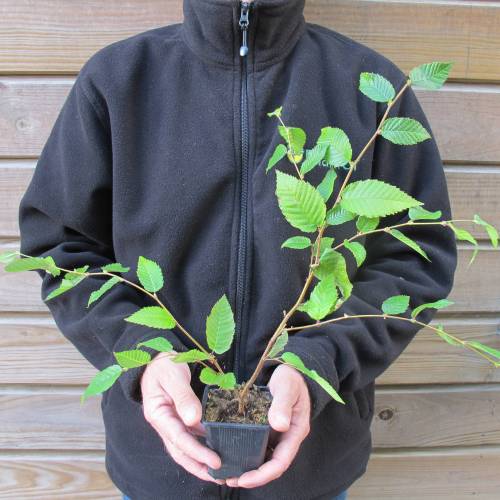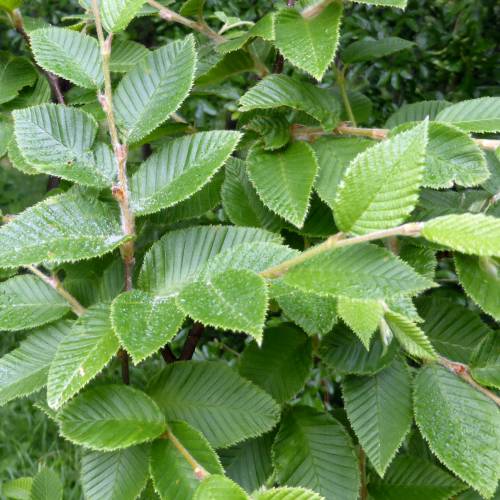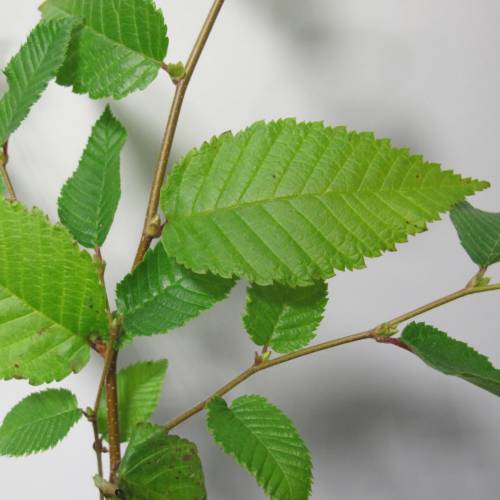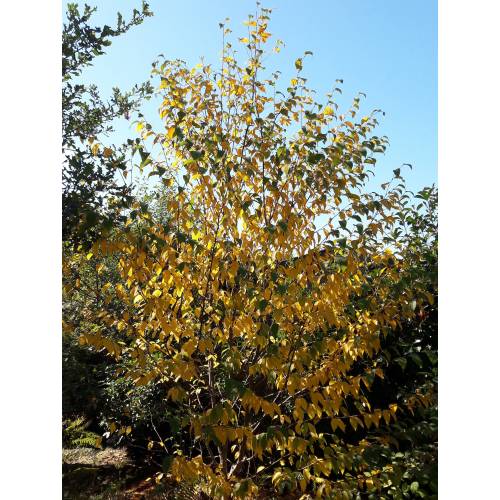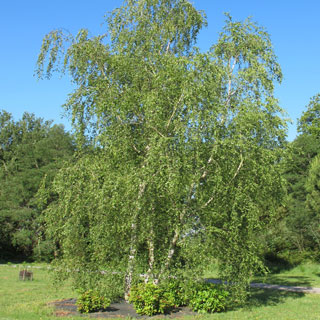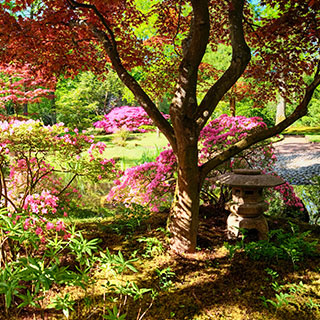
Plants
Birch Chichibu / Betula Chichibuensis
-
31.29 € Birch Chichibu - Betula Chichibuensis
7777K - Unavailable
-
0.40 € FERTILISER
7777A - Available
-
Geographical origin: Island of Honshu in Japan
Adult size: Height up to 6m (10m in its natural habitat)
Foliage: Deciduous
Type of soil: Rich, well-drained preferably chalky
Climate: Hardy up to -20°C
Site: Partial shade to full sun
Properties and uses:
An endangered and rare variety in Japan, impossible to find in the wild under our latitude, this beautiful Birch tree is a ‘must have' in your garden.
It distinguishes itself from other Birch trees thanks to its elongated, ribbed leaves, green in the spring then becoming golden in the autumn. Best to grow in large gardens to enhance its splendour and in smaller ones for its shape of several trunks of which multiple branches grow.
In Japan, in its natural habitat, there are only 21 trees left in the wild.
On the Island of Honshu in Japan, The Birch Chichibu is an endangered variety. Affected by deforestation, the deterioration of the soil and its natural habitat, only under-specimens of this variety are listed nowadays even if the most recent studies have been able to list new specimens.
As well as its more than reduced natural zone of habitat, this rarity can also be explained by its reproduction's mode. Variety said ‘self-compatible'; the trees must be close together in order to mutually pollinate and ensure their multiplication. Given the poor quantity of seeds released by those small quantities of trees, their number stay relatively reduced. Please note that the cultivation by taking cutting is in progress but is logically less rich from a genetic point of view.
True living vestige, it is the witness of a much larger widespread variety at one time.

